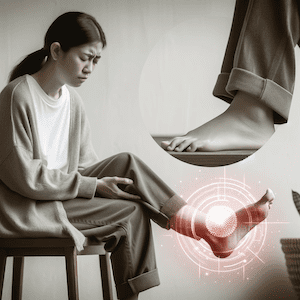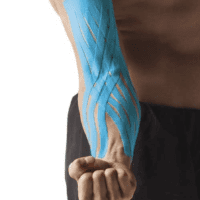Rowing Injuries
Article by John Miller

Rowing Injuries
Essential Guide to Preventing and Managing Rowing Injuries
Rowing is a splendid way to enhance fitness while appreciating the scenic beauty of rivers and lakes. Known for strengthening the core, legs, arms, and offering cardiovascular benefits, rowing is a popular sport. However, it’s crucial to acknowledge that rowing can lead to specific injuries, primarily related to the lower back and due to repetitive strain.
The Role of Technique and Strength
Proper technique is critical in rowing. Novices, in particular, are prone to injuries if they don’t correct their form. Additionally, core and back strength are vital to power through strokes and prevent injuries. Rowers should continuously seek to enhance their technique and include core and strength training, coupled with flexibility exercises, in their routine.
Common Injuries from Rowing
Rowing, while providing comprehensive physical benefits, can also lead to a range of injuries due to the repetitive nature of the stroke and the physical demands of the sport. The most common injuries associated with rowing are often related to overuse, improper technique, or inadequate physical conditioning. Here’s an overview of the most common rowing injuries:
- Lower Back Pain: This is perhaps the most prevalent injury among rowers, resulting from the repetitive motion and the stress placed on the spine during rowing. Factors like poor posture, weak core muscles, and improper rowing technique can contribute to lower back issues.
- Rib Stress Fractures: The repetitive force applied by the muscles of the upper body can lead to stress fractures in the ribs. These are particularly common in elite rowers and can be exacerbated by overtraining and insufficient recovery time.
- Knee Pain: Rowing involves significant leg drive, which can put pressure on the knees. The repetitive bending and extending can lead to issues such as patellofemoral pain syndrome (runner’s knee) or tendinitis.
- Wrist Tendinopathy: The action of feathering the oar can lead to overuse injuries in the wrist, particularly tendinitis or tenosynovitis, as the wrist flexors and extensors are heavily utilised.
- Forearm Tendinitis: Similar to wrist tendinopathy, the muscles and tendons in the forearm can become inflamed due to the gripping and movements required to manipulate the oar.
- Shoulder Pain: The shoulders are heavily involved in the rowing stroke, leading to potential overuse injuries such as rotator cuff tendinitis, impingement syndromes, or bursitis.

What is the Injury Rate for Rowing?
The injury rate in rowing varies depending on factors such as the level of competition (elite vs. amateur), the age of the participants, and the intensity of training. While specific statistics can fluctuate, rowing is generally considered a sport with a moderate risk of injury compared to high-contact sports.
For elite rowers, studies have shown that the injury rate can be quite high due to the intense training schedules and the physical demands of the sport. A study published in the British Journal of Sports Medicine reported that elite rowers experience a higher incidence of injuries, with back injuries being the most common, followed by knee and rib injuries. The rate of overuse injuries in these athletes is significant due to the repetitive nature of rowing.
In contrast, recreational rowers may experience a lower rate of injury, but they are still susceptible to overuse injuries, especially if they do not follow proper technique or if they increase their training volume too quickly without adequate conditioning.
In general, the injury rate in rowing can range from around 2 to 3 injuries per 1000 hours of rowing for elite athletes, with lower rates observed in recreational rowers. However, these rates can vary widely, and it’s essential to consider the context of the data, including the population studied and the definitions of injury used in the research.
Rowing Injury Prevention
Preventive strategies, including proper technique training, strength and conditioning exercises, adequate rest, and professional guidance, are key to reducing the risk of injury in rowing for all levels of participation.
Prevention and management of these injuries typically involve a combination of proper technique, adequate physical conditioning, effective pre- and post-activity stretching, and ensuring sufficient recovery and rest periods.
It’s also crucial for rowers to engage in cross-training and strength training, focusing on the core, back, and shoulder stabilisers, to support the demands of rowing and reduce the risk of injury.
Consulting with a sports physiotherapist can provide personalised advice and strategies to prevent injuries or manage existing conditions effectively.
Rowing Injury Risk Factors
- Poor rowing technique
- Inadequate fitness levels
- Overtraining
- Musculoskeletal limitations
- Unsupervised resistance training
- Excessive running in land training
Prevention and Management
1. Pre-Season Screening: A PhysioWorks pre-season rowing screening can assess biomechanics, muscle lengths, and strengths, pinpointing potential injury risks.
2. General Health and Fitness: Attaining a good level of overall fitness is crucial for injury prevention.
3. Warm-Up and Cool-Down: Incorporating stretching in your routine helps in muscle recovery and flexibility.
4. Immediate Injury Management: If injured, cease rowing immediately and seek professional advice. Early intervention can significantly reduce recovery time.
5. Technique Monitoring: Regularly review and correct your rowing technique to prevent injuries.
6. Rib Injury Caution: For suspected rib injuries, follow Rowing Australia guidelines which recommend a minimum of 4 days off water training.
Conclusion
Rowing is a rewarding sport, but like any physical activity, it comes with injury risks. Understanding these risks, implementing preventive measures, and seeking professional advice when needed, can significantly reduce these risks.
What to Do?
If you’re experiencing any discomfort or pain related to rowing, it’s essential to consult with a physiotherapist. They can provide tailored advice, guide you through recovery, and help prevent future injuries.
Don’t hesitate to seek professional guidance to enjoy rowing safely and effectively.
Related Articles
- Lower Back Pain in Rowers – Readers will learn about common causes and prevention strategies for lower back pain, directly relevant to rowing.
- Wrist Tendinopathy Management – This would offer specific advice on managing wrist injuries, which are prevalent in rowing.
- Knee Injury Prevention for Rowers – Provides insights on how to protect the knees during rowing activities.
- Core Strengthening Exercises for Rowers – Explains the importance of core strength in preventing rowing injuries and offers practical exercises.
- Flexibility and Stretching Routines for Rowers – Discusses how flexibility can aid in injury prevention and performance.
- Pre-Season Screening for Rowers – Explains the benefits of undergoing a pre-season assessment to identify potential injury risks.
- Rib Stress Fracture Care – Since rib stress fractures are mentioned, this article would provide targeted advice for recognition and management.
Common Muscle Injuries
A Physiotherapist's Guide
Introduction
Muscle injuries, presenting as muscle strain, pain or myalgia, are prevalent health issues affecting a wide range of individuals. This detailed guide, from a physiotherapist's perspective, delves into various muscle injuries, elaborating on their management, prevention, and the importance of professional advice. Explore the linked articles for an in-depth understanding of muscle injuries and their effective treatment.
Neck & Back Muscle Injuries: Causes and Solutions
- Back Muscle Pain: This pain often results from prolonged poor posture or physical overuse. Key to relief is engaging in exercises that strengthen the core muscles and improve posture, thereby alleviating the strain on the back.
- Neck Sprain: Caused by sudden, awkward movements, a neck sprain can benefit from a combination of gentle stretches and targeted strengthening exercises to restore flexibility and strength.
- Text Neck: A modern ailment resulting from extended mobile device use, text neck can lead to chronic pain. Regular breaks, posture-awareness, and neck-strengthening exercises are essential for prevention.
- Whiplash: Commonly occurring in car accidents, whiplash requires a careful approach including neck stabilisation exercises and controlled movement to encourage healing and prevent further injury.
Lower Limb Muscle Injuries: Understanding and Treating
- Hamstring Strain: Particularly common among athletes, particularly runners, this strain demands rest initially, followed by a carefully structured rehabilitation program focusing on gradual strength building and flexibility.
- Thigh Strain: Often seen in sports involving sprinting and jumping, thigh strains need a combination of rest, ice, compression, and elevation (RICE) in the initial stages, followed by carefully planned strengthening exercises.
- Groin Strain: This injury requires a nuanced approach, including sufficient rest and targeted exercises, to ensure a safe and effective recovery.
- Calf Muscle Tear: Key to recovery is a balance of rest, gentle stretching exercises, and a gradual return to full activity, ensuring the muscle heals correctly and strength is regained.
Upper Limb Muscle Injuries: Prevention and Care
- Golfer's Elbow and Tennis Elbow: Both these conditions involve inflammation of the tendons and require a rest period, followed by ice therapy and specific exercises tailored to strengthen the affected muscles.
- Corked Thigh: Resulting from direct impacts, these injuries demand immediate application of ice and a controlled, gradual exercise regime for recovery.
- DOMS, Fatigue-Related Cramps & Myalgia: Adequate rest, good hydration, and gentle stretching are crucial in alleviating these conditions.
- RSI: Regular stretching, ergonomic workplace adjustments, and taking breaks are key preventive measures for repetitive strain injury.
Systemic Causes of Muscle Pain: A Holistic View
- Fibromyalgia: This complex condition demands a holistic treatment approach, including exercise routines, stress management techniques, and sometimes medication.
- Rheumatoid Arthritis: Effective management combines medication, gentle exercise, and regular physiotherapy sessions.
Prevention and Management Strategies
- Regular Exercise: Regular physical activity helps maintain muscle strength and flexibility, reducing the risk of muscle injuries.
- Posture Improvement: Good posture, both in motion and at rest, is crucial for preventing muscle strain.
- Proper Warm-up and Cool-down: Adequate warm-up before and cool-down after physical activity is vital in preventing muscle strains and injuries.
- Ergonomic Adjustments: Making ergonomic adjustments at work and during daily activities can significantly reduce the risk of repetitive strain injuries and other muscle-related issues.
- Maintaining a Healthy Weight: Keeping a healthy weight reduces the strain on muscles, particularly in weight-bearing joints.
What to Do? Seeking Professional Advice
Consult a physiotherapist or doctor for personalised advice and treatment plans. Remember, early intervention can significantly improve recovery outcomes and prevent chronic problems.
Conclusion
While muscle injuries are common, effective management and prevention are achievable with the right approach and knowledge. Understanding the causes, symptoms, and various treatments available empowers individuals to take proactive steps in their recovery and prevention. For the most tailored and effective treatment, always seek the guidance of a professional physiotherapist.
Common Ligament Injuries


Ligament Injury
Ligament injuries frequently occur in various body parts, leading to pain and restricted movement. The most common sites include the knee, ankle, shoulder, wrist, hand, and spine.
Notably, knee injuries like ACL, PCL, MCL, and LCL sprains are prevalent.
Shoulder injuries often involve the AC joint, while wrist and hand issues can include thumb and finger sprains.
Spinal ligament injuries, such as back and neck sprains, and whiplash, are also significant. Understanding these injuries helps in prevention, early detection, and effective treatment.
- Ankle Ligament Injuries
- Knee Ligament Injuries
- Shoulder Ligament Injuries
- Wrist & Hand Ligament Injuries
- Spinal Ligament Injuries
Ankle Ligament Injuries
Ankle injuries often result from sudden twists or rolls, leading to sprains and strains.
Knee Ligament Injuries
Knee ligament injuries are among the most common and can severely impact mobility and quality of life.
- ACL Injury
- PCL Injury
- MCL Sprain
- LCL Sprain
- Posterolateral Corner Injury
- Patella Dislocation
- Superior Tibiofibular Joint Sprain
Shoulder Ligament Injuries
Shoulder ligament injuries can be debilitating, affecting a range of movements.
Wrist & Hand Ligament Injuries
Injuries in the wrist and hand are common, especially in sports and physical activities.
Spinal Ligament Injuries
Spinal ligament injuries can result from various causes, including posture issues and physical impacts.
Related Articles
- Ligament Tear - Common Ligament Injuries: Offers a comprehensive overview of ligament injuries across different body parts, including prevention, early detection, and effective treatment strategies.
- Knee Ligament Injury - A Physiotherapist's Guide & Tips: Provides insights into diagnosing knee pain, covering ligament issues among other concerns, and suggests pain relief methods through exercise and treatment.
- Common Ankle Ligament Injuries: A Physiotherapist's Guide: Discusses the treatment and prevention strategies for ankle ligament injuries, emphasising the importance of early intervention.
- Sprained Ankle Treatment & Recovery Guide: Offers detailed guidance on the recovery timelines for sprained ankles, highlighting the importance of restoring strength, motion, and function for a full recovery.
- Ankle Strapping: Complete Guide To Injury Prevention: Focuses on preventing ankle injuries through effective strapping techniques and discusses conditions like ankle arthritis and biomechanical issues.
- Sub-Acute Soft Tissue Injury: Explores the treatment and recovery process for various ligament injuries, including those affecting the knee, shoulder, wrist, hand, and spine.
- Sprained Thumb Treatment And Recovery Tips: Delivers practical tips for treating and recovering from a sprained thumb, along with general management strategies for wrist and hand pain.

















































































